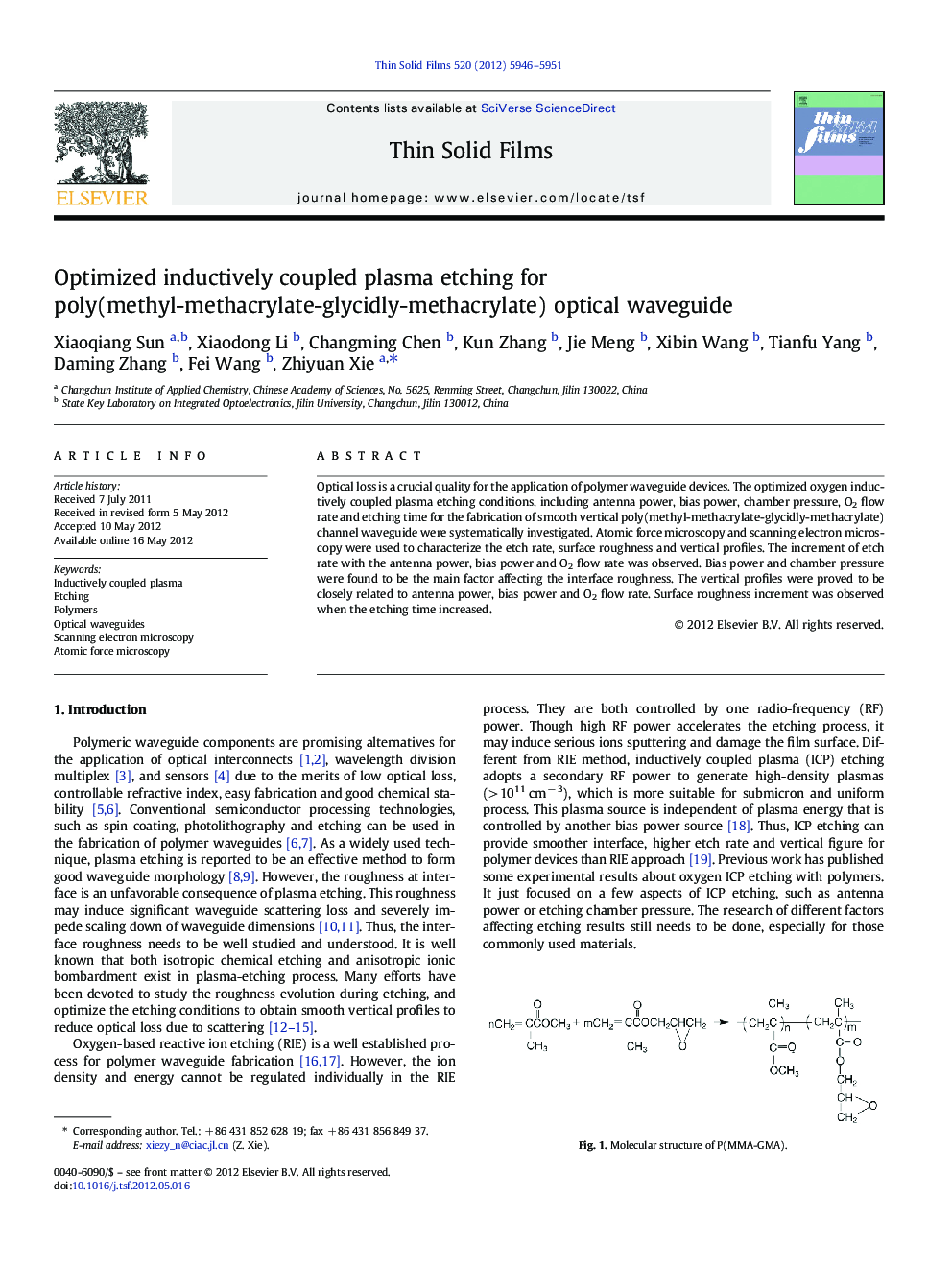| Article ID | Journal | Published Year | Pages | File Type |
|---|---|---|---|---|
| 1667129 | Thin Solid Films | 2012 | 6 Pages |
Optical loss is a crucial quality for the application of polymer waveguide devices. The optimized oxygen inductively coupled plasma etching conditions, including antenna power, bias power, chamber pressure, O2 flow rate and etching time for the fabrication of smooth vertical poly(methyl-methacrylate-glycidly-methacrylate) channel waveguide were systematically investigated. Atomic force microscopy and scanning electron microscopy were used to characterize the etch rate, surface roughness and vertical profiles. The increment of etch rate with the antenna power, bias power and O2 flow rate was observed. Bias power and chamber pressure were found to be the main factor affecting the interface roughness. The vertical profiles were proved to be closely related to antenna power, bias power and O2 flow rate. Surface roughness increment was observed when the etching time increased.
► Poly(methyl-methacrylate-glycidly-methacrylate) (PMMA-GMA) channel waveguide studied ► Waveguide fabricated by inductively coupled plasma etching ► The etch rate increases with the antenna power, bias power and O2 flow rate. ► Bias power and chamber pressure have significant effects on the interface roughness. ► Vertical profiles closely related to antenna power, bias power and O2 flow rate
